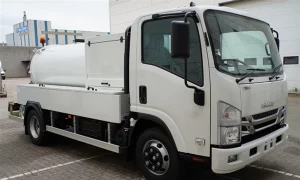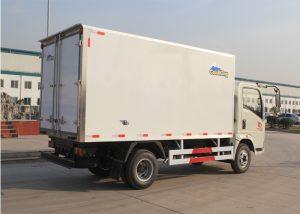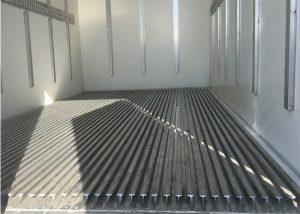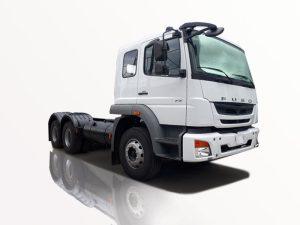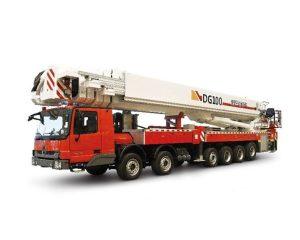Monday to Saturday - 8:00 -17:30
How Many Gallons is a Tanker Truck? Understanding Truck Capacities and Specifications
Tanker trucks play a crucial role in transporting liquids, from fuel to chemicals, across various industries. One of the most common questions surrounding these vehicles is, “How many gallons can a tanker truck hold?” In this article, we will explore the specs of tanker trucks, their components, capacities, and other relevant insights to provide a comprehensive answer along with practical examples.
What is a Tanker Truck?
A tanker truck is a type of vehicle designed specifically for transporting liquid cargo. These trucks are equipped with specialized tanks that can vary greatly in size and shape, depending on their intended use. Most commonly, they are utilized for delivering fuel, water, chemicals, and even food-grade liquids.
Components of a Tanker Truck
Understanding the components of a tanker truck is essential for grasping its total capacity and functionality. Here are the main parts:
- Tank: The most significant component where the liquid is stored.
- Chassis: The framework that supports the tank and the drivetrain.
- Pump: Often included for loading and unloading liquids efficiently.
- Valves: Used for controlling the flow of liquid in and out of the tank.
- Safety Equipment: Includes mechanisms to prevent spills and ensure safe transport.
Typical Capacities of Tanker Trucks
The capacity of a tanker truck can vary widely based on several factors, including the type of liquid being transported and legal regulations. On average, most tanker trucks hold between 5,000 to 11,000 gallons. However, some specialized tanks can exceed these amounts.
Standard Sizes of Tanker Trucks
Here’s a table summarizing the common sizes of tanker trucks:
| Tanker Type | Typical Capacity (Gallons) | Common Uses |
|---|---|---|
| Small Tanker | 1,500 – 5,000 | Water delivery, small fuel deliveries. |
| Medium Tanker | 5,000 – 8,000 | Gasoline, diesel, chemicals. |
| Large Tanker | 8,000 – 11,000 | Crude oil, large fuel deliveries. |
| Specialized Tanker | Over 11,000 | Specialty chemicals, food-grade products. |
Factors Affecting Tanker Truck Capacity
Several factors influence the capacity of a tanker truck, including:
Type of Liquid
The type of liquid being transported can dictate the design and size of the tanker. For instance, food-grade tanks must adhere to strict hygiene standards, which might limit their capacity compared to petroleum tanks.
Legal Regulations
Local and federal laws may impose restrictions on the maximum weight and volume that can be transported. This is especially crucial for hazardous materials, where the regulations are much stricter.
Design and Shape of the Tank
Different shapes, including cylindrical and elliptical tanks, can affect the total volume that a tanker can carry. The design also impacts the truck’s stability and maneuverability on the road.
Real-Life Examples of Tanker Truck Usage
Understanding how tanker trucks are used in various industries helps illustrate their importance. Here are a few examples:
Fuel Transport
Companies like Shell and ExxonMobil utilize large tanker trucks to transport gasoline and diesel fuel. These often range from 8,000 to 11,000 gallons, designed for maximum efficiency while adhering to safety standards.
Water Delivery Services
Municipalities or private companies provide water delivery services using smaller tanker trucks that typically carry between 1,500 to 5,000 gallons, ideal for residential and commercial deliveries.
Chemical Distribution
Chemical manufacturers often require specialized tankers for transporting products such as acids or bases. These often need larger capacities and added safety features that can handle extreme temperature variations.
Safety Considerations for Tanker Truck Operations
Tanker trucking comes with unique safety challenges. Here are some key safety considerations:
Proper Loading and Unloading Procedures
To prevent spills and accidents, proper protocols must be established. This includes ensuring the truck is on level ground, using ground wires to prevent static electricity, and employing spill containment measures.
Regular Maintenance and Inspections
Regular maintenance checks are essential for the safety and efficiency of tanker trucks. This includes inspection of the tank, pumps, valves, and overall vehicle condition.
Training for Drivers
Drivers must undergo specialized training to operate tanker trucks safely. This includes understanding how liquid slosh affects stability and how to manage the vehicle in emergencies.
Trends and Innovations in Tanker Truck Design
The tanker trucking industry is continually evolving with new technologies and designs. Here are some notable trends:
Eco-friendly Tankers
With the push for sustainable practices, many companies are designing eco-friendly tanker trucks aimed at reducing fuel consumption and emissions.
Advanced Safety Features
New technologies, such as advanced GPS tracking and collision avoidance systems, are being integrated into tanker designs to enhance safety on the roads.
Smart Tanks
IoT (Internet of Things) technology is paving the way for smarter tanks equipped with sensors to monitor liquid levels and conditions, providing data for optimal logistical planning.
Frequently Asked Questions (FAQs)
1. How much liquid can a standard gasoline tanker truck hold?
A standard gasoline tanker truck typically holds between 8,000 to 10,000 gallons of liquid.
2. Are all tanker trucks the same size?
No, tanker trucks vary widely in size, usually ranging from 1,500 to over 11,000 gallons depending on the intended cargo and industry requirements.
3. What types of liquids can tanker trucks transport?
Tanker trucks can transport a variety of liquids, including fuel, water, chemicals, and food-grade liquids, depending on their design and specifications.
4. Why is safety training important for tanker truck drivers?
Safety training is crucial to help drivers manage the unique challenges of transporting liquids, including handling emergency situations and preventing spills.
5. What are common uses for smaller tanker trucks?
Smaller tanker trucks are often used for water delivery, local fuel deliveries, and transporting non-hazardous liquids.
6. What regulations affect tanker truck capacities?
Local, state, and federal regulations dictate aspects such as maximum weight, size limits, and safety standards, impacting how tanks are designed and used.


